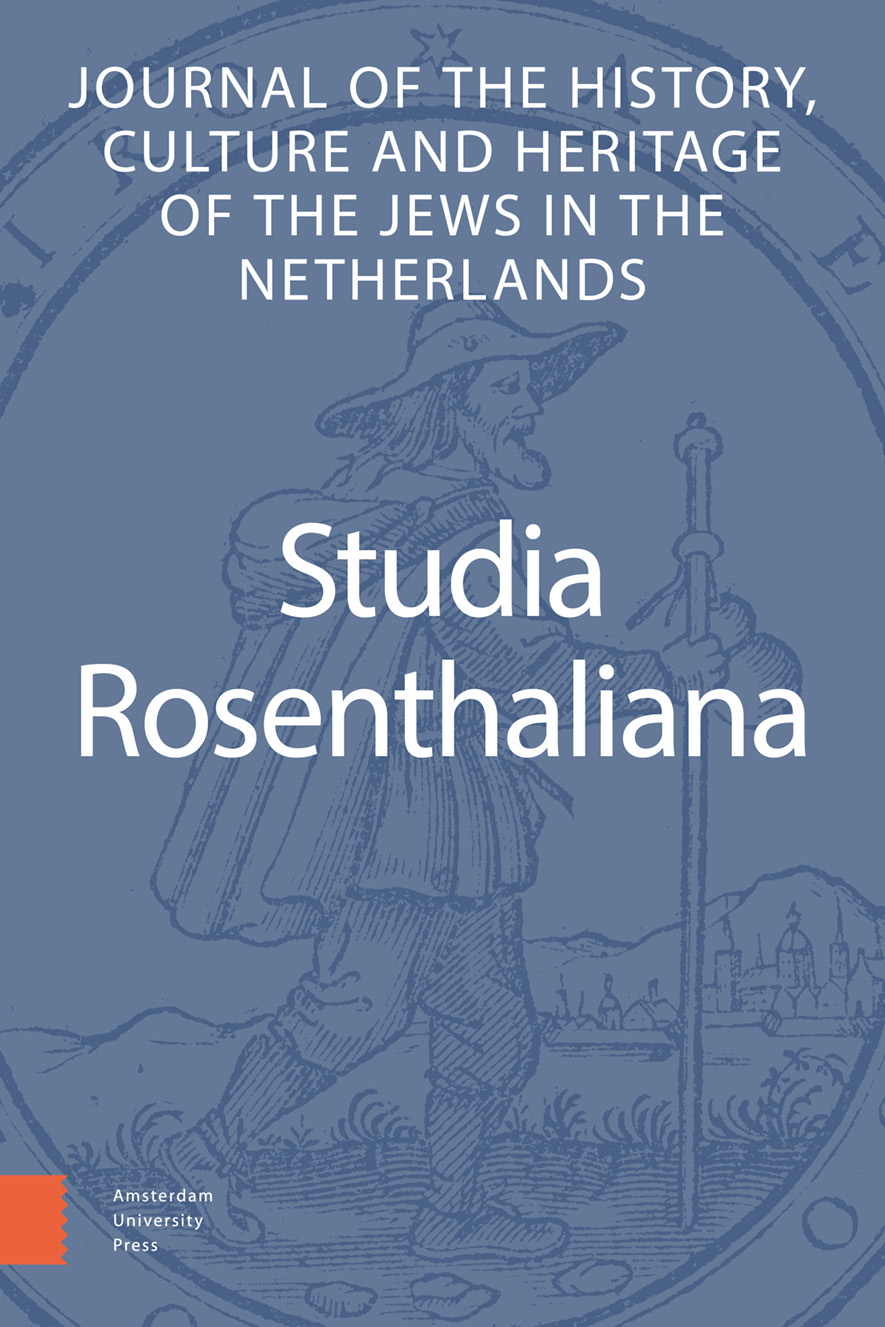- Home
- A-Z Publications
- Studia Rosenthaliana
- Previous Issues
- Volume 48, Issue 1, 2022
Studia Rosenthaliana - Volume 48, Issue 1, 2022
Volume 48, Issue 1, 2022
-
-
A Philosopher in the Stock Market
More LessAuthor: Meir BnayaAbstractThis contextualization of Confusión de Confusiones (Amsterdam, 1688), the first description ever written of the stock market, within the broader European Baroque culture, will allow us to reconstruct Penso de la Vega’s attitude towards capitalism and to reassess the intellectual personality of one of the most interesting figures of Amsterdam Jewry and the Western Sephardic Diaspora in the seventeenth century.
Penso de la Vega was equipped with a consistent anti-determinist conception, strongly individualist values, a clear preference for ‘Virtu’ over ‘Fortuna’ and for the ‘natural’ over the ‘institutional.’ He was affiliated with the financial and commercial elite of Amsterdam Jewry and convinced of the congruence between the interests of the Republic and those of the Dutch colonial companies. From his Confusión de Confusiones he emerges as a distinct advocate of the entrepreneurial character of Dutch capitalism in its contemporary mercantilist version. He was in favour of investing in the shares of the Dutch colonial companies; no ethical considerations hampered his support for the legitimacy of the stock market’s businesses and their ensuing profits.
De la Vega’s criticism of tendencies in the stock market culture derived from his disinclination to recognize ‘Fortuna’ as the patron of the bourse instead of ‘Mercury’. In other words, the legitimacy of speculative activities in the bourse was accepted as long as these were carried out following the model of wealthy merchants, interested in long-term investments.
On a hermeneutical level, however, this pragmatic positive attitude towards the accumulation of wealth through trade and towards investment and speculation is radically denied by the faint voice of an elderly philosopher participating in the dialogue. After a foray into the stock market, this voice served to express ascetic and substantialist ideas, with a particular role for Desire as the source of all human tragedy.
-
-
-
A ‘Haro’ing Tale of a Jewish Medical Student
More LessAuthor: Rabbi Edward ReichmanAbstractThe University of Padua Medical School is known to be the first institution to officially allow Jews to matriculate, beginning in the early fifteenth century. It remained the only university to do so until around the mid-seventeenth century, when medical schools in the Netherlands first began accepting Jewish students as well. In this essay we focus on one student from this Dutch historical chapter, David de Haro, rescuing him from obscurity and identifying him as likely the first Jewish medical graduate of the famed University of Leiden. Marshalling a wide array of previously untapped archival material, we reconstruct part of his tragically short life. In addition to gaining insight into the experience of university life in this period, we catch a rare glimpse of the unique challenges faced by a young Jewish medical student in the Netherlands in the early seventeenth century.
-
-
-
A Walk Around the Block on Vlooienburg (1650-1700)
More LessAuthor: Maarten HellAbstractIn early modern Amsterdam, Vlooienburg was the heart of the Jewish Quarter. The vibrant neighborhood was the home of Sephardic and Ashkenazic Jews, as well as German and Scandinavian Lutherans, Dutch Protestants and Catholics, French and Walloon Huguenots, English Puritans, and a small Black community. Recent spatial historical research sheds new light on these seventeenth-century inhabitants and provides insight about where they lived, their religious backgrounds, families, occupations, daily life, and material culture. For example, only a short walk around the southeastern building block provides a good deal of information about the living conditions of surgeons, bakers, bookkeepers, widows, servants, innkeepers, gamblers, prostitutes, printers – and, not least, the Sephardic merchant and writer, Gaspar Méndez del Arroyo, alias Abraham Idaña.
-
Volumes & issues
Most Read This Month


